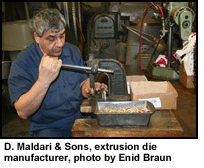I am not a member, let alone a lifetime member, of The Actors Studio. I am a member of the Playwright Directors Workshop of The Actors Studio, which just completed its Festival of Readings. Because of my time commitments to my brother and our TV project, I wasn’t able to attend all nine readings, but I did make it to two.
Jeremy Kareken’s “The Sweet, Sweet Motherhood” is about a phenomenon that could happen tomorrow. Originally commissioned by the Playwrights Center and the Guthrie Theatre, it’s about an undergraduate student, Shelley (read by Caroline Cooney) who wants Prof. Stein (the playwright) to be her thesis advisor. Shelley wants to use herself as her thesis: she wants to be inseminated with chimpanzee sperm and report on what happens. Stein tries to talk her out of it, and by the end we’re still not really sure if she did or she didn’t. The play is laceratingly funny and makes you seriously consider the implication of intraspecies breeding and cloning.
Jeremy Wine’s “The Squeezer and the Squeezed” is about a man named Alfred being help against his will in a mental health facility. His doctor, Bob, and his sultry case worker, Ms. Tensenbaum, work their own special kind of therapy on Alfred. The play is biting in its wit about how perhaps a part of all of us wants to be famous for a moment, if even through an act as violent as Alfred’s (he assaulted barrels of ice cream and sorbet with gunfire), and how Alfred comes to terms with the reality that’s he’s not the next American serial killer, he’s a lonely guy in Jersey. It recalls Pinter’s “The Hothouse” in the way it plays with the reality of the patient and how the hospital environment shapes that.





